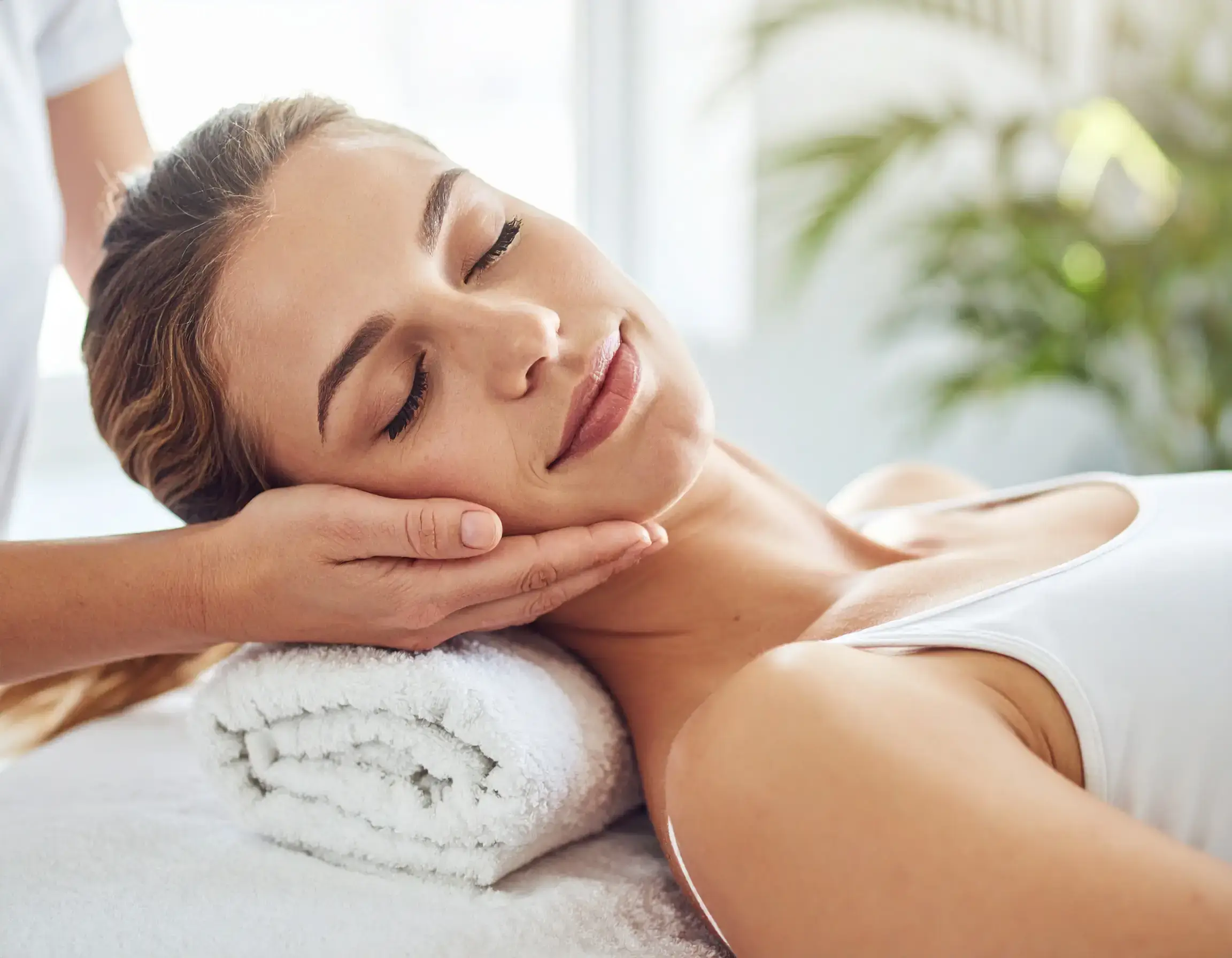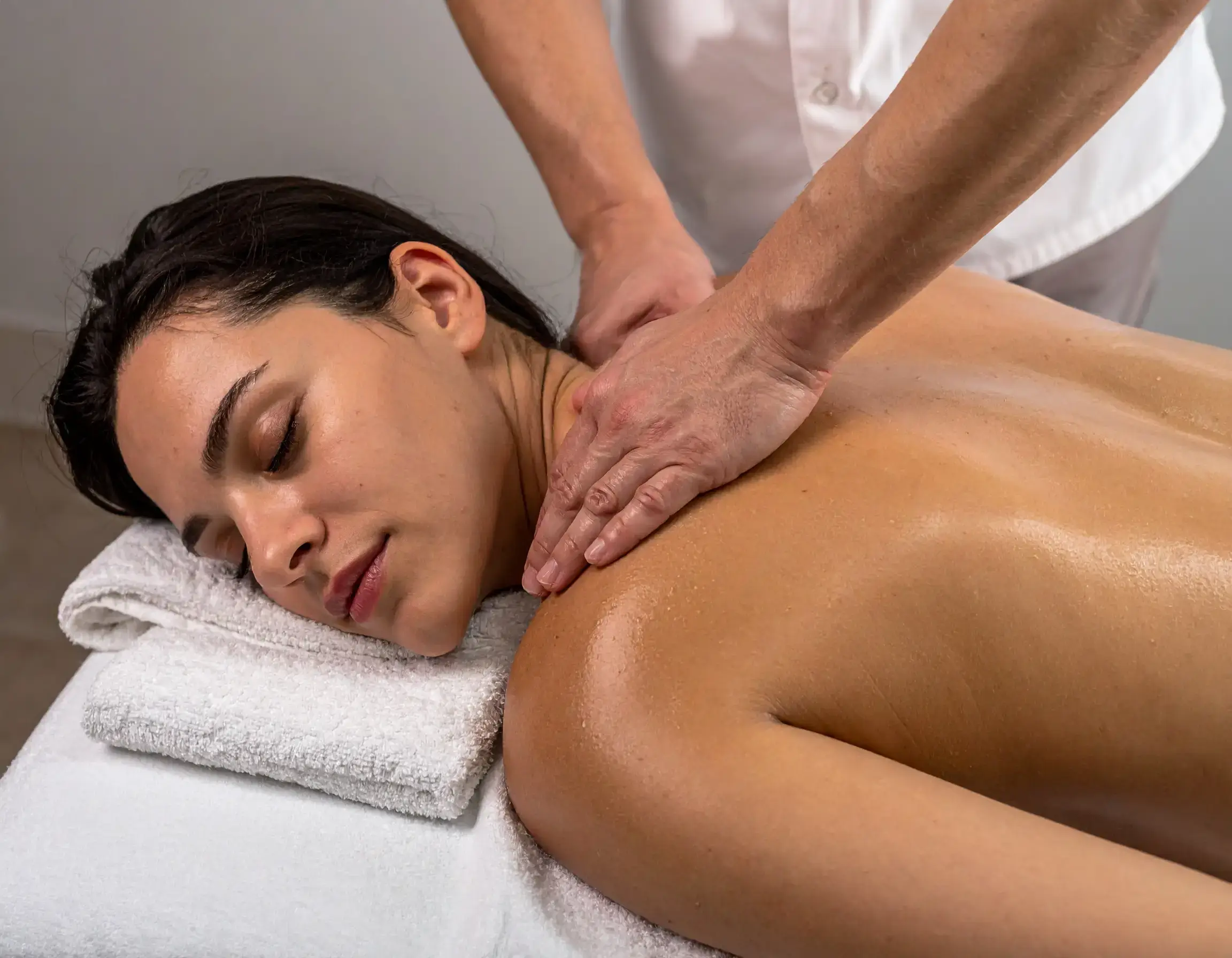4 Types of Sports Massage
Sports massage often involves targeted pressure and stretching techniques to help an athlete’s muscles recover, as shown above. Sports massage has become an invaluable tool for athletes of all levels – from elite professionals to weekend warriors. This specialized form of massage is designed to improve recovery, help prevent injuries, and boost overall athletic performance. Unlike a relaxation massage that simply loosens muscles, a sports massage zeroes in on areas overused in a sport to treat specific problems and encourage tissue repair.
Therapists adapt their methods to an athlete’s unique needs, focusing on restoring proper function to muscle groups that have been overworked.
Sports massage sessions are typically tailored to when and why the athlete needs them. In fact, sports massage can be divided into four main categories based on timing and purpose: pre-event, post-event, maintenance, and rehabilitation. Each type serves a distinct role – from preparing you before a competition to aiding in injury recovery – and involves different techniques to achieve the desired results.
Pre-Event Sports Massage
A pre-event sports massage is typically a short, invigorating session given shortly before a competition (often within an hour or two of the event). The goal of a pre-event massage is to warm up the muscles and get the body ready for peak performance. To accomplish this, therapists use fast, light techniques – such as quick effleurage strokes, dynamic stretching, and brisk percussive tapping (tapotement) – to increase blood flow and muscle temperature without causing soreness. Deep, intense pressure (like heavy petrissage kneading) is usually avoided right before an event so the athlete’s muscles aren’t left feeling tender or fatigued. Instead, the focus is on stimulating the tissues, improving flexibility, and boosting the athlete’s mental focus and nerve alertness for competition. In essence, a pre-event massage serves as an enhanced warm-up that can reduce muscle tightness and anxiety, helping you enter an event loose, limber, and mentally prepared.
Key benefits of a pre-event massage include:
- Increased circulation, delivering oxygen and nutrients to muscles before activity.
- Improved joint mobility for a better range of motion.
- Enhanced muscle flexibility, so muscles move freely without strain.
- Reduced muscle tension, easing any tight spots prior to performance.
These effects together prime the body for explosive movements and can help prevent cramps or pulls during the event. By using a pre-event massage, athletes often feel more prepared and confident as they head into competition.
Post-Event Sports Massage
A post-event sports massage is performed after an athlete’s event or intense training session, with the aim of accelerating recovery. Ideally, this massage takes place once the athlete has had time to cool down, rehydrate, and stretch a bit – often within a few hours up to a day or two after the event (and generally no later than about 72 hours post-event). In a post-event massage, the therapist typically starts with gentle, slow strokes (such as gliding effleurage) to calm the nervous system and relax tight muscles. As the session progresses, they may incorporate deeper techniques – like petrissage (deep kneading), friction, compression, and stretching – to flush out lactic acid and metabolic waste, reduce muscle knots, and promote circulation in the worked muscles. This process helps jump-start the body’s healing after the immense physical stress of competition. The overall pace of a post-event massage is slower and more soothing than a pre-event massage, focusing on recovery rather than arousal.
Importantly, post-event sports massage can significantly lessen the soreness that often follows intense exercise. Research shows that a post-workout sports massage reduces delayed-onset muscle soreness (DOMS) by approximately 13% and improves flexibility in the short term. It also aids the body’s repair process by improving blood and lymphatic flow, which carries away toxins and brings in nutrients for recovery. Many athletes report feeling less stiffness and fatigue after a proper post-event massage, allowing them to resume training sooner and with a lower risk of injury to overworked muscles.
Key benefits of a post-event massage include:
- Reducing inflammation and swelling in muscle tissues.
- Speeding up recovery time by clearing waste and delivering nutrients to cells.
- Improving circulation to oxygenate muscles and flush out lactic acid buildup.
- Relieving pain and muscle soreness, including DOMS, for greater comfort.
By incorporating post-event massages after hard workouts or competitions, athletes can bounce back faster. This type of massage not only feels restorative, but it can also reduce the risk of injury by ensuring that minor strains or tight spots are resolved before the next training session.
Maintenance Sports Massage
A maintenance sports massage (also called a restorative or maintenance massage) is a regular, ongoing session scheduled throughout an athlete’s training cycle to keep the body in top condition. Unlike pre- or post-event massages which are tied to competitions, maintenance massages are typically done on rest days or during lighter training periods – for example, once every week or biweekly during intense training phases. The purpose is to address any emerging issues before they become serious: by identifying tightness, trigger points, or imbalances in muscles, the therapist can treat them early, thereby preventing injuries before they occur. In fact, this type of massage is often described as “restorative” because it allows athletes to train hard with less risk of injury – essentially resetting the muscles and soft tissues so the athlete can continue performing optimally.
During a maintenance massage, the therapist will tailor techniques to the athlete’s needs at that time. These sessions often involve a mix of deeper work and targeted therapy: for example, they might use deep-tissue pressure on chronically tight areas, trigger point release on “knots,” myofascial release to ease stiff connective tissue, and assisted stretching to improve flexibility. By regularly incorporating such techniques, maintenance massages help increase overall flexibility and range of motion, keeping the athlete’s body limber and resilient. They also serve to relieve any accumulated stress or minor aches from training, which helps athletes stay physically and mentally fresh.
Key benefits of a maintenance massage include:
- Minimizing the risk of injury by addressing muscle tightness or imbalances early.
- Boosting energy levels, as regular massage can reduce fatigue and muscle stress.
- Improving focus, concentration and mental readiness by promoting relaxation during training cycles.
Overall, maintenance massages play a vital role in an athlete’s routine, acting as tune-ups that sustain peak performance. They keep muscles supple, improve joint mobility, and even provide a mental reset, so athletes can consistently train at high levels without breakdowns. Many professionals consider maintenance sports massage a key part of their conditioning program, on par with proper nutrition and rest.
Rehabilitative Sports Massage
A rehabilitative sports massage (or sports massage for rehabilitation) is utilized when an athlete is injured or recovering from an injury. This type of massage is focused on restoring function and mobility after injuries or surgery, and it is often done in conjunction with medical treatment or physiotherapy. In a rehabilitation scenario, the massage therapist will usually collaborate with doctors or physiotherapists to fit massage therapy into the overall recovery plan. The immediate goals are to manage pain, reduce scar tissue formation, and improve circulation to the injured area – all of which promote faster healing.
Early in the rehabilitation process, the therapist typically uses gentle techniques. For example, light effleurage strokes can relax the muscles and increase blood flow around the injury without aggravating it. As healing progresses (and with medical approval), the therapist may gradually introduce more direct techniques: friction massage to break down adhesions or scar tissue, tapotement and vibrations to stimulate the muscles and nerves, and careful stretching or joint mobilization to restore range of motion. Deep intensive pressure (deep tissue work) is used cautiously – or not at all – if it would cause pain in a recovering area. The intensity is always adapted to what the injured tissues can handle. Over time, rehabilitative massage helps to realign muscle fibers and connective tissue properly as they heal, ensuring that the athlete regains as much normal function as possible and reduces compensations or stiffness from the injury.
Key benefits of a rehabilitative massage include:
- Restoring function and mobility to muscles and joints that were limited by injury.
- Reducing swelling and inflammation in the affected area, which helps alleviate pain and improve movement.
- Improving circulation to injured tissues, delivering nutrients for repair and flushing out inflammatory toxins.
- Relieving pain and muscle spasms as healing progresses, without excessive reliance on pain medication.
In addition to these physical benefits, sports massage during rehabilitation can provide important psychological benefits. Injuries often come with stress and frustration; massage therapy helps alleviate anxiety, improve mood, and even enhance sleep for the recovering athlete. This mind-body relief is invaluable, as a calmer mental state can promote better healing. By easing both the body and mind, rehabilitative sports massage supports a more complete recovery, helping athletes safely return to training faster and with more confidence.
Understanding the four types of sports massage – pre-event, post-event, maintenance, and rehabilitative – allows athletes and active individuals to get the right kind of care at the right time. Each type serves a unique purpose in enhancing performance or recovery, and together they cover the full spectrum of an athlete’s needs. For example, you might use pre-event and post-event massages around competitions, schedule maintenance massages during heavy training periods, and rely on rehabilitative massage if an injury occurs. By integrating these massages into your routine, you can train more consistently and effectively, with fewer injuries.
If you’re unsure which type of sports massage you need, it’s wise to consult with a professional. A certified sports massage therapist or physiotherapist can evaluate your condition and create a personalized treatment plan tailored to your goals and physical state. They can combine techniques as needed and advise you on timing (for instance, how soon after an event to get a massage, or how frequently to do maintenance sessions). With expert guidance, you can fully leverage the benefits of sports massage – keeping your body healthier, speeding up recovery, and ultimately improving your athletic performance in a safe way.



